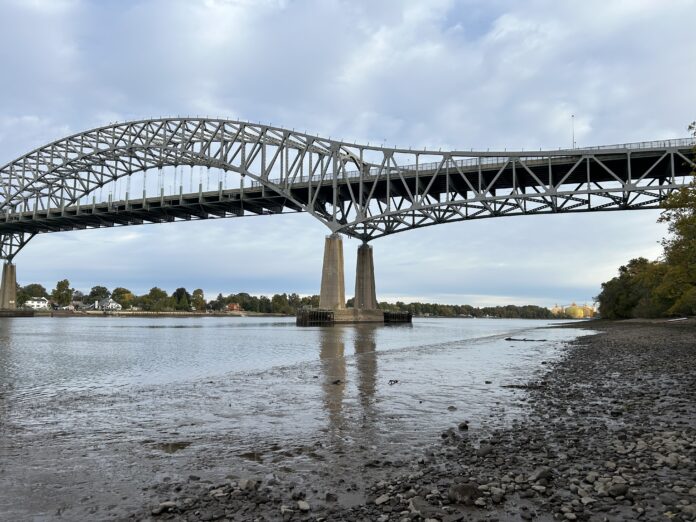More than 200 community members participated in the second series of joint public meetings between the Pennsylvania Turnpike Commission (PA Turnpike) and New Jersey Turnpike Authority (NJTA) on the Delaware River Bridge Project, which will ease congestion and support the third stage of the PA Turnpike/Interstate-95 (I-95) Interchange Project.
Held in Bristol, PA and Florence, NJ, this series of meetings provided the public with updates on the project, the results of the alternatives analysis, the proposed alternatives to be studied in the Supplemental Environmental Impact Statement (EIS), potential environmental impacts, future public involvement opportunities, and next steps.
“The Delaware River Bridge continues to be vital, not only for the Commonwealth, but for the entire mid-Atlantic region,” said PA Turnpike CEO Mark Compton. “We are eager to continue engaging the community on the Delaware River Bridge Project, which is critical to enhancing accessibility, facilitating the movement of goods and services and improving travel for tens of thousands of travelers a day.”
In 2022, the PA Turnpike and NJTA began re-evaluating rehabilitation and replacement options for the existing Delaware River Bridge as part of the PA Turnpike/I-95 Interchange Project, which directly connects both roadways to make I-95 a continuous route throughout the Mid-Atlantic.
“These meetings continue to be an opportunity for our agencies to hear from the community on the future of this critical link between New Jersey and Pennsylvania,” said NJTA Executive Director James Carone. “It was encouraging to see so many people take the time from their busy lives to attend. The questions they asked and the feedback they provided will be invaluable to the project team as the preliminary design progresses.”
The agencies studied nine different replacement alternatives and will be advancing two for further study, both north of the existing bridge. Both alternatives would maintain four lanes of traffic throughout the duration of construction. Additionally, rehabbing the existing bridge to meet the project need is not feasible due to the bridge’s age, the 2017 fracture, and updated federal requirements.
The North Staged Alternate (NSA) alternative involves constructing a new bridge in stages approximately 40 feet north of the existing bridge over a period of approximately 8 years. The initial phase will start with constructing the first half of the new bridge. Once that side of the new bridge is built, traffic will switch to the first half of the new bridge, while the existing bridge is removed. Then, the second half of the new bridge will be built. The new bridge will ultimately accommodate six lanes of traffic.
The North Partial Impact (NPI) alternative involves constructing a new bridge approximately 75 feet north of the existing bridge over a period of 4 years. First, both PA-bound and NJ-bound portions will be built about 15 feet apart. Then, all traffic is moved to the new bridge, and the existing bridge is removed. This option allows the entire new bridge to be built at once.
The first of three meetings was held in March. A third public meeting will take place in Spring 2026, where the results of the detailed alternatives analysis will be announced. Public hearings will take place in the Fall of 2026. Throughout this time, the agencies will continue to follow the National Environmental Policy Act (NEPA) and environmental clearance process per Federal Highway Administration (FHWA) regulations.
After comments from the Public Hearing are addressed and a Final SEIS/Record of Decision is issued, the Delaware River Bridge Project’s preliminary engineering phase is expected to last until late 2027 or early 2028. Then, the project moves into final design, where the design parameters are refined and public engagement is considered. This phase is anticipated to last until 2031.
The PA Turnpike, in partnership with the NJTA, is leading the project with oversight from FHWA. To meet federal requirements, the agencies are updating the 2003 environmental clearance documents due to the passage of time, regulatory changes, and potential modifications to the selected alternative following the 2017 truss fracture and bridge closure. The project study area includes Bristol Borough and Bristol Township in Bucks County (PA), and Burlington Township and Florence Township in Burlington County (NJ).
Comments will continue to shape the study analyses and the Supplemental Environmental Impact Statement. A thirty-day comment period is now open until November 14, 2025. Throughout the 30-day comment period, all materials will be available on the project website for review.


